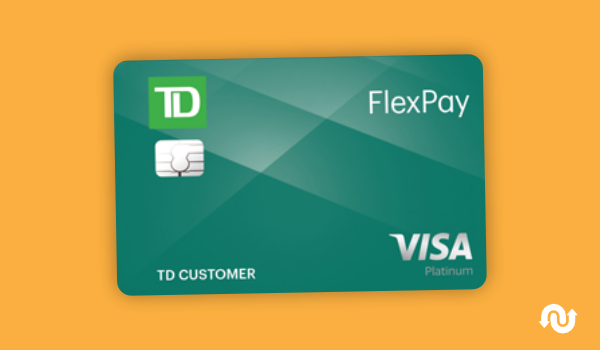
The TD FlexPay Credit Card is specifically engineered for financially astute individuals seeking to minimize interest accrual and maximize principal reduction on high-interest credit card debt. Its core strategic advantage is an exceptionally long 0% introductory Annual Percentage Rate (APR) on balance transfers for 18 billing cycles, making it a powerful tool for structured debt repayment.
This review provides a detailed analysis of the card’s mechanics, its cost-benefit profile, and the optimal strategy for its use as a debt consolidation tool. The card’s design, which forgoes a rewards program in favor of a lengthy interest-free period and consumer-friendly fee policies, makes it a superior choice for a user whose sole objective is the efficient elimination of existing revolving debt. It is a specialized tool, and when deployed correctly, its value is substantial.
TD FlexPay Credit Card Strategic Benefits
- 18-month 0% intro APR: The central feature of the TD FlexPay card is the 18-month 0% intro APR on balance transfers. This creates a year-and-a-half period during which a transferred balance will not accumulate any interest. This is a powerful mechanism for two reasons:
- $0 Annual Fee: The card has no annual fee, ensuring that the only primary cost of the balance transfer strategy is the initial transfer fee.
- No Penalty APR: This is a critical risk-mitigation feature. A late payment will not trigger a higher penalty interest rate on your entire balance, which protects your consolidation plan from a single misstep.
- Late Fee Forgiveness: TD Bank automatically waives your first late payment fee within a 12-month period. This provides an additional layer of protection for the disciplined but imperfect user.
- Cell Phone Protection: When you pay your monthly wireless bill with the card, you receive coverage for your phone against theft or damage. While not directly related to debt consolidation, it is a valuable ancillary benefit.
Who Can Apply: Eligibility Criteria
This card is intended for applicants with a strong credit profile who reside within TD Bank’s U.S. service area.
- Geographical Location: Applicants must reside in one of the following states: Connecticut, Delaware, Florida, Maine, Maryland, Massachusetts, New Hampshire, New Jersey, New York, North Carolina, Pennsylvania, Rhode Island, South Carolina, Vermont, Virginia, or Washington, D.C.
- Credit Score: A good to excellent credit score is required (typically a FICO score of 670 or higher).
- Standard Requirements: Applicants must be at least 18 years of age and have a valid Social Security Number.
How to Apply: The Application Protocol

- Confirm Eligibility: The first step is to confirm that you are a resident of one of the eligible East Coast states.
- Gather Information: Prepare the details of the credit card balances you intend to transfer, including the full account numbers and the exact amounts.
- Complete the Online Application: Visit the TD Bank website and fill out the secure application for the TD FlexPay card. You can request your balance transfers as part of this initial application.
- Review Terms and Conditions: Before submitting, carefully review the card’s terms, particularly the details of the balance transfer fee and the variable APR that will apply after the introductory period ends.
- Receive a Decision: TD Bank often provides a credit decision within minutes of submission.
Frequently Asked Questions
- Is there a 0% introductory APR on new purchases?
No. This is a critical detail. The 0% intro APR offer applies only to balance transfers. All new purchases made with the card will be subject to the standard variable APR immediately. Therefore, the optimal strategy is to use this card solely for debt consolidation and not for new spending. - How is the balance transfer fee calculated?
During the first 18 months, the fee is 3% of the amount of each transfer, with a $5 minimum. This fee is added to your total balance. For example, a $5,000 transfer will result in a total balance of $5,150 ($5,000 + $150 fee). - Does the “Late Fee Forgiveness” protect my credit score?
No. While the bank will waive the monetary fee for your first late payment in a year, the fact that the payment was late can still be reported to the credit bureaus, which can negatively impact your credit score. - What is the best strategy to ensure my balance is paid off in 18 months?
The best strategy is to create a payoff plan. Take your total transferred balance (including the fee) and divide it by 17. The result is the minimum amount you should pay each month to ensure the balance is gone before the last month of the promotional period. Setting up automatic payments for this calculated amount is highly recommended.





